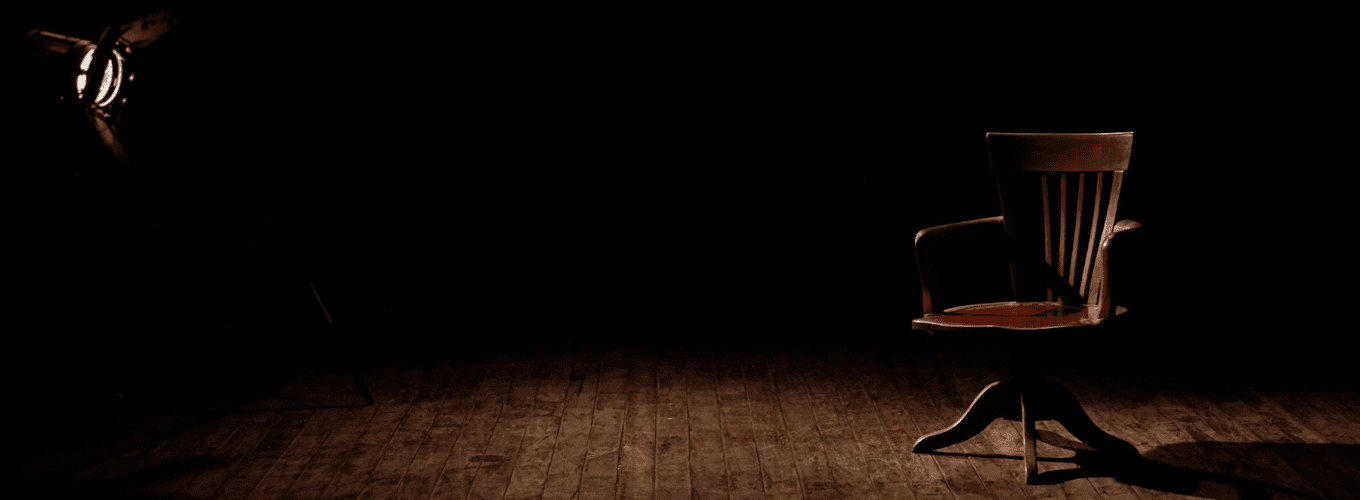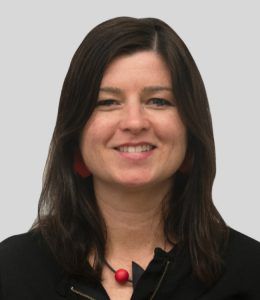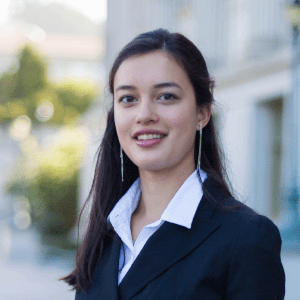
Speaker Spotlight: Sarah Evanega
Undergraduate science communication intern Mira Cheng sits down with speakers from the weekly IGI Seminar Series to discuss their innovations, motivations, and eclectic hobbies.
Dr. Sarah Evanega is the Senior Associate Director of International Programs of the College of Agriculture and Life Sciences and the Director of the Cornell Alliance for Science at Cornell University. I interviewed Dr. Evanega when she spoke at the IGI on March 3rd, 2020. An abridged version of our conversation appears below.
MC: Could you please tell me a little bit about the journey to your professional role today?
 SE: “I was a biology major as an undergrad in a small liberal arts school; we didn’t have a lot of the very specialized courses that you have at a place like Berkeley. In my junior year I had to either take animal physiology or plant physiology, so I took plant physiology and I loved it! I was taking organic chemistry the same semester and it was so cool because you could see the reactions you were learning in organic chemistry in plants. So that was my initial commitment to plant science.
SE: “I was a biology major as an undergrad in a small liberal arts school; we didn’t have a lot of the very specialized courses that you have at a place like Berkeley. In my junior year I had to either take animal physiology or plant physiology, so I took plant physiology and I loved it! I was taking organic chemistry the same semester and it was so cool because you could see the reactions you were learning in organic chemistry in plants. So that was my initial commitment to plant science.
In college, I learned about graduate school and decided I wanted to continue to study plants and so I went to graduate school. I was studying the self-incompatibility response in crucifers, and I loved the work that the lab did. It was really exciting, but at some point I woke up and had this moment of, ‘Wait, how did I get here?’ I felt like I’d always been so interested in other cultures and people, and I wasn’t engaging with society [in grad school]. At the same time, this was the early 2000s, we saw the GMO debate play out and you could see that these tools that were so important to us in plant science were becoming demonized. I thought: this is something that I can take on, this is something that I can do because I really want to. So that began my journey to the intersection of science and society. I ended up writing my dissertation about the controversy around genetically engineered crops in developing countries. I engaged a lot of farmers, scientists, activists, and all kinds of different people in the countries that I was doing research in. It was such a fun Ph.D. experience in the end.
When I finished [my Ph.D.], I went and worked for this large, global, wheat project that [involved] 22 institutions working together to combat this emerging disease. And it might have seemed like a surprising next move, but in the end I learned a lot about international agriculture, about forming international coalitions and [about] working together towards a common cause. I think it was really great preparation for [when], in 2013, we [founded] and grew the Alliance for Science.”
MC: Who were your role models throughout this journey?
SE: “[I had] a lot of role models and a lot of really important mentors. I think one distinction that’s really important for graduate students to think about is that your advisor and your mentor does not have to be the same person. If your advisor is also a mentor that’s a great bonus, but you can have lots of mentors around you to be inspired and to be successful.
At the point where I was [thinking], ‘Hmm, maybe this isn’t what I want to be doing. I guess I’ll leave now,’ one of my mentors looked at me and said, ‘What do you want to do?’ And I was like, ‘I think I want to get more [into] the intersection of science and society, maybe I’ll be a science writer.’ And he said, ‘So, do it.’ His point was, you don’t have to leave graduate school to do what you want to do. And his words absolutely rang true [for me]. I never take the straight, narrow path—it’s always a slightly windy road for me, or the path less traveled, if you will. His words really still stand out in my mind and he’s still a great mentor today. And then of course there were a lot of really amazing people who were and are still doing great outreach in this space, who really made themselves accessible to me as a graduate student and inspired me.”
MC: What are some of the biggest challenges in your work at the Alliance for Science?
NW: “One of the biggest challenges I would say is the blessing and the curse of social media. On one hand, social media offers us the opportunity to get good science and science-based information out there. It’s a very democratized suite of platforms because almost anybody can hop on and share their knowledge and glean the knowledge of others.
It’s very empowering, but it is also a platform that allows the massive spread of misinformation. The way it can be digitally manipulated really hurts people. I mean if you think about all the anti-vaccine memes that are so prevalent out there—it’s devastating, it’s really, really hurting people’s lives. There’s just so much information out there that it’s hard for people to navigate. And the way these platforms are set up, it’s exacerbated this tribal nature that we live in right now, where you are [only] affiliating, listening, and hearing from people who think like you. That’s a dangerous place for all of us to be—and nothing brings that out more than an election year.”
MC: What is your favorite project that Alliance for Science has done?
SE: “I think our Global Leadership Fellows Program has created such an amazing and strong network of champions who wouldn’t otherwise know each other and now work together across continents. When I see, for example, a fellow from Uganda helping a fellow from Bangladesh with his work—it’s really rewarding. Those two individuals would never know each other, but through the Alliance for Science they found each other and now they’re helping each other and learning from one another. They’re changing the way science advocacy is done; they are the next generation of leaders.”
MC: How, in your opinion, has the GMO debate evolved in the United States?
SE: “ I think it is evolving. We track the debate over time and we look at how the issue is being covered in social media and also in traditional media. We track various issues: we track coverage of GM, we track coverage of gene editing, CRISPR, gene drives. And what we see is that the amount of coverage of GMOs is decreasing, and increasingly reporters want to write about other really exciting new innovations, like CRISPR. We also see that CRISPR coverage is really positive. People are excited about it, journalists are excited about it and they’re reporting on it in a really exciting way—so that gives me hope.
You know, we’ve had lots of debates in science. We’ve had debates about evolution, debates about climate change, debates about vaccines, and science prevails. These debates, they come and they go, and the GMO debate has been a long, long three decades but I do think we’re coming out on the other end. And part of that is because we’re living in different times where we just can’t afford not to use all the tools we have to address the big challenges that we face. It’s a different era [with] different problems, and a different degree of urgency.”
MC: How has the GMO debate played out in developing countries?
SE: “It’s so different in so many places. In terms of agricultural biotechnology, in the US, 1.8 percent of the population is engaged in agriculture, in a country like Burkina Faso that [number] might be around 83 percent. And so the connection that they have with the challenges of farming are very real. We [in the US] have become so disengaged from agriculture, that most people have not directly experienced the utility of these biotech crops. But that’s not the case in the developing world where there isn’t this distinction between who’s a consumer and who’s a farmer—the farmer and the consumer are the same person. We suffer from this abundance of choice in our country, but I think there are many places in the world where they cannot afford the luxury of the precautionary principle. The science is clear and decades of research show the same conclusion: that this technology is safe and offers great benefits to the environment. So some countries can continue to debate that, but other countries cannot afford the luxury of that debate.”
MC: When working internationally, how do you ensure that your projects are community-driven and sustainable?
SE: “A lot of [developing] countries are far, far ahead of the US [in terms of GMO technology]. If we look at the United States, the amazing land grant system, the number of world class universities and research institutes—in the past 30 years, only one product (the virus-resistant papaya) has been developed by a US university researcher and actually reached the hands of farmers. We have 30 years or more of these technologies, these tools being accessible [to] scientists and only one product.
[In comparison] you go to a country like Uganda, and you have so many amazing products in the pipeline that are being developed by Ugandan researchers that are meant to benefit and reach Ugandan farmers. There’s just such a rich and vast suite of technologies. There’s work on cassava, making it disease-resistant, bio-fortified. There’s work on biofortifying East African Highland bananas, [creating] water-efficient maize—[there are] so many amazing projects in their national programs. These are public sector researchers in Uganda, developing products that are not meant to be exported commodities, but are meant to benefit the people right there, in that country. So by some measures I would say they are further ahead than we are.”
MC: What are some lessons that the IGI and other scientists working with modern tools of genome editing can learn from the history of the GMO debate?
SE: “I think that the one thing that we can learn from it is that people are driven by utility. When science develops products that are useful for us, we adopt them. And so we have to use these tools to address the concerns that people have, whether that be in human health or in food and agriculture. When we have innovations that pose so much utility, we’re less obsessed with perceived risks that don’t exist.”
MC: What is something that you do a lot that people wouldn’t necessarily expect?
SE: “My first real experience in grassroots organizing was when I helped found the Ithaca Women’s Roller Derby League, which I skated in for a number of years as ‘Sarabellum.’ We were the Ithaca League of Women Rollers and our team was the SufferJets. My number actually was nineteen after the Nineteenth Amendment, which of course is one hundred years old this year.”
MC: If you could describe yourself in three words, what would they be?
SE: “Creative, entrepreneurial, resourceful.”
MC: If you could listen to a conversation between any two people (past or present), who would they be?
SE: “I just read the book The Water Dancer. It was an amazing book, beautiful writing, but it makes me wonder what Harriet Tubman could share with us in this time where there’s so much isolationism and fear and exclusion, particularly around issues of immigration. What could someone like Harriet Tubman tell us to help us today…”
MC: What advice would you give your younger self?
SE: “When I was growing up in the eighties, we had these books called Choose Your Own Adventure, where you didn’t read the book from the beginning to the end, you got to choose different paths throughout the book. Sometimes you even backtracked before you could keep going forward. I guess my advice to young people and to my younger self is choose your own adventure. There’s so much opportunity out there and I think the most exciting opportunities are when you’re doing something no one has done before. It’s your adventure, not the traditional models that we’re more often exposed to.”
 By
Mira Cheng
By
Mira Cheng